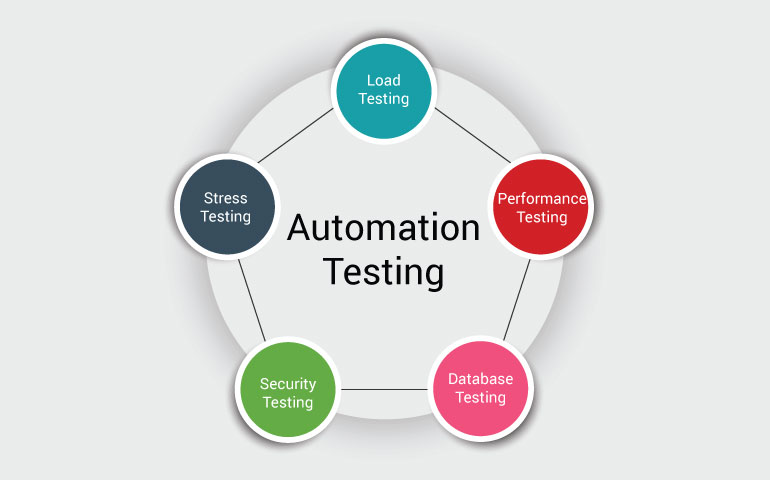The Best Guide to Implementing Automation Testing Efficiently
The Best Guide to Implementing Automation Testing Efficiently
Blog Article
From Guidebook to Automated Screening: A Comprehensive Guide to Transitioning Efficiently and Effectively
In the world of software application testing, the change from handbook to automated processes has actually come to be a progressively vital change for companies looking for to enhance performance and precision in their testing practices. The trip from handbook to automated testing is not without its difficulties, but when come close to tactically and with a clear strategy in mind, the benefits can be substantial.
Advantages of Automated Testing
Automated screening supplies numerous advantages, enhancing efficiency and precision in software application advancement procedures. Automated tests can be run at the same time on several gadgets and operating systems, dramatically speeding up the testing stage compared to hands-on screening.
Furthermore, automated screening ensures a greater level of accuracy in detecting issues. Uniformity in testing is additionally boosted, as automated tests execute the very same steps specifically each time they are run.
Choosing the Right Tools

To start with, assess your demands and purposes. Recognize the scope of your project, the innovations included, and the capability of your group. This analysis will assist you figure out the features and capabilities you call for in your screening devices.
Second of all, think about the compatibility of the devices with your existing processes and systems. Seamless combination with your present software application advancement lifecycle is necessary to make certain a smooth shift to automation.
Furthermore, assess the scalability and flexibility of the devices. As your screening requires progress, the devices must have the ability to adapt and fit changes successfully.
Finally, consider the support and community around the tools. Durable assistance and an energetic user community can give beneficial sources and help when implementing automated testing. By carefully thinking about these elements, you can choose the right tools that line up with your requirements and set the phase for a successful change to automated testing.
Creating Efficient Examination Scripts

When crafting test manuscripts, it is important to take into consideration the certain requirements of the software program being checked and ensure that the manuscripts address all essential performances. Clear and descriptive calling conventions for test manuscripts and test instances can improve readability and maintainability. In addition, including error handling systems within the test scripts can aid in determining and addressing problems promptly.
Moreover, organizing test scripts into modular parts can enhance reusability and scalability, reducing redundancy and boosting efficiency in examination script upkeep. Routine testimonials and updates to evaluate manuscripts are important to keep speed with advancing software program demands and capabilities. By complying with these concepts, testers can produce reliable and robust test manuscripts that contribute significantly to the success of automated screening processes.
Integrating Automation Into Workflows
Effective assimilation of automation tools right into existing operations improves procedures and enhances efficiency within software growth cycles. When integrating automation into process, it is important to identify recurring tasks that can be automated to conserve time and decrease human mistake. By seamlessly integrating automated screening devices like Selenium or Appium right into the software advancement lifecycle, groups can accomplish faster responses on code modifications, resulting in quicker bug discovery and resolution. This assimilation permits continual testing throughout the growth procedure, guaranteeing that any kind of problems are determined at an early stage, leading to higher software application high quality. link In addition, automation can be go to this web-site used to activate examinations automatically after each code dedicate, supplying immediate validation and maximizing testers to concentrate on even more complex scenarios. Proper combination of automation tools calls for collaboration in between development, screening, and operations teams to develop a unified operations that maximizes efficiency and efficiency in supplying premium software program items.
Making Sure a Smooth Transition
Effectively transitioning to automated screening involves careful preparation and careful execution to decrease disruptions and make the most of performance in the software application growth process - automation testing. To make sure a smooth change, it is vital to begin by performing a comprehensive evaluation of the existing testing processes and determining areas where automation can bring one of the most significant benefits. Engaging with all stakeholders beforehand at the same time, including designers, testers, and task supervisors, is crucial for garnering support and buy-in for the automation effort
Interaction is vital during this transition stage. Clear interaction of the goals, advantages, and expectations of automated testing helps to take care of any kind of resistance or problems that might develop. Additionally, supplying appropriate training and resources for staff member to upskill in automation devices and methods is vital for ensuring an effective change.

Conclusion
To conclude, transitioning from handbook to automated screening uses countless advantages, consisting of increased efficiency and reliability. By selecting the suitable tools, writing efficient test manuscripts, and integrating automation effortlessly into process, companies can make sure a smooth and effective change. It is vital to embrace automation as an important possession in software application screening procedures to boost total top quality and performance.
In the world of software program screening, the change from guidebook to automated procedures has become a significantly vital transition for organizations seeking to enhance effectiveness and accuracy in their screening techniques. Automated tests can be run at the same time on multiple devices and operating systems, considerably speeding up the testing phase compared to manual testing. Uniformity in screening is likewise enhanced, as automated tests execute the very same actions specifically each time they are run.To make certain the successful execution of picked screening devices, the development of reliable examination manuscripts plays a critical role in verifying the performance and performance of automated procedures - automation testing. By adhering to these principles, testers can create efficient and robust test scripts that add substantially to the success of automated screening processes
Report this page